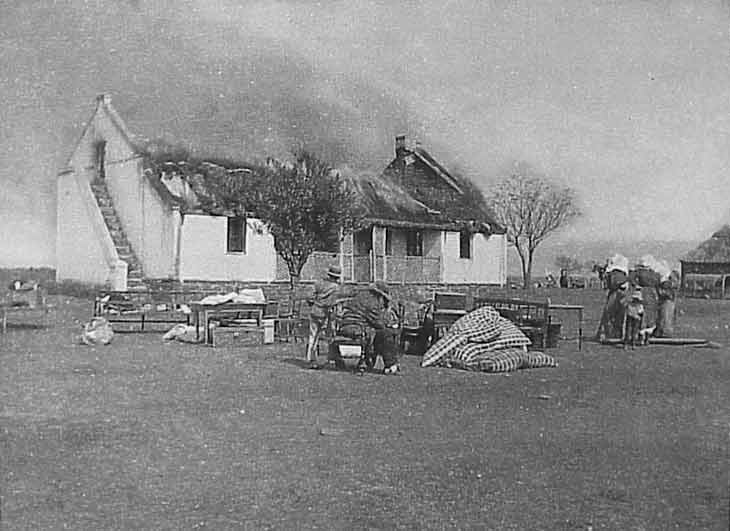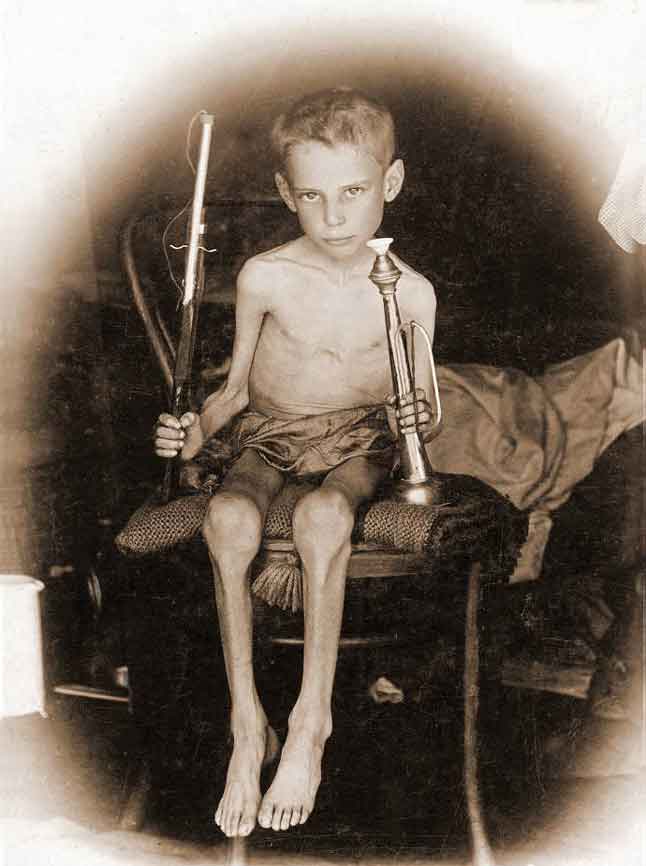
Baden Powell remembered for organizing the Boys Scouts
Back to home Back to Historical
The
Van Rensburg's of Rensburg Siding, Colesberg, Cape part
1
The Anglo-Boer War Introduction
part 2
The Anglo-Boer War around
Rensburg Siding: Boer Leaders part 3
The Anglo-Boer War around
Rensburg Siding Nov 1899 part
4
The
Anglo-Boer War around Rensburg Siding Dec 1899 part
5
The
Anglo-Boer War around Rensburg Siding Jan 1900 part
6
The Anglo-Boer War around
Rensburg Siding Feb 1900 part 7
The Anglo-Boer
War in retrospect part
8
Australian units, persons and casualties part
9
MAIN
MAP source http://www.mjvn.co.za/anglo-boer/mainmap1.jpg
The Anglo-Boer War: Australians capture De Wet's artillery gun at Rensburgdrift part 10
Page 1 Page 2
The Anglo-Boer War in Retrospect
The so called gentlemen's war which were to be over in no time with a cup of tea, turned out completely different. The United Kingdom with a population of 30 million people went to war against two small Boer Republics with a Boer population of 300,000. The British deployed 448,435 British troops, of which 30,000 were volunteers from the British Empire and 50,000 volunteers were from the Cape and Natal. Included in the fighters on the British side were 30,000 armed Africans.
The Boers were mainly farmers with young boys and aged grandfathers fighting to maintain their independence and way of life. They totaled between 50,000 and 60,000. It is estimated that between 1,500 and 3,000 volunteers from overseas came to fight for the Boers, including Colonel Arthur Lynch born in Ballarat Victoria, Australia. The Boer Republics were also backed by 10,000 and 15,000 Boer rebels from the Cape and Natal who joined them. A further 10,000 Africans supported the Boer cause.
Many
today when they think of the Boer War it conjure images of British bravery,
heroes like Baden Powell who was besieged in Mafeking. Baden Powell was instructed
to set up a military base in Mafeking, where previously the Jameson Raid
was launched from. However the war had a dark side, most fatalities were inflicted
on the innocent Boer women and children as they were subjected to inhumane treatment
and neglect by the British. For the civilians it was far from a gentlemen's
war. Mafeking was an outback little town on the edge of the Kalahari which was
most effectively used as war propaganda to unite the British behind the war.

Baden Powell remembered for organizing the Boys Scouts

This photo is in memory of the other side of the war,
an innocent Boer child suffering in a concentration camp
1. SCORCHED EARTH POLICY. Burning 30,000 farm houses and killing
the animals and destroying the crops. It is estimated that about a tenth of
the prewar horses, cows and other farm stock remained. Numerous towns were completely
laid waste: Dullstroom, Ermelo, Bethal, Wolmaransstad, Carolina, Reitz, Parys,
Lindley, Bothaville.

A Boer family with a few belongings they were allowed to save, watch as
their home is burnt down by
the English. Behind the women one can see one of the English soldiers on a horse.
2.
CONCENTRATION CAMPS - Mainly women, children and old men in concentration
camps. 160,000 Boers and 130,000 Africans were held in British concentration
camps.
28,000
Boer women and children died in the concentration camps, of which 22,000 were
children under 16 years of age.
More than 14,000 Africans died in 66 separate concentration camps set up by
the British.
The Boer women and children were herded onto open cattle train trucks and sent to be crammed into these concentration camps. Years later Adolf Hitler was able to learn from the English concentration camps during the Anglo-Boer war with his own death camps. The English used the euphemism "Refugee Camps", to describe these Concentration Camps. Kitchener's real aim was to remove the Boer families from the scene, thus cutting the support and assistance which the Boers received in the war. Secondly he felt that locking the women and children away would provide psychological pressure on the Boers to surrender. The Boers were use to wide open space and lived in isolation from one another. With the over-crowding in these camps diseases spread very quickly, many dying from dysentery, pneumonia and measles. Many were housed in tents, food, water and clothing were inadequate. The result was the Boer women and children being exterminated by neglect. To grasp how many Boer women and children died out of the Boer nation, for the British to have experienced a similar pogrom it would have meant that 3 million of their women and children would need to have died in concentration camps. The English propaganda machine at first denied that things were going wrong in the concentration camps, it was the heroic Englishwoman Emily Hobhouse who brought it to the attention of the British public.
After Emily Hobhouse met with Sir Henry Campbell-Bannerman, leader of the Liberal Party, and future Prime Minister, he stated: "When is a war not a war? When it is waged by methods of barbarism in South Africa."
Another British MP, David Lloyd George, who later would also become the Prime Minister accused the British of using "a policy of extermination" against women and children. He also stated, "When children are being treated in this way and dying, we are simply ranging the deepest passions of the human heart against British rule in Africa.... It will always be remembered that this is the way British rule started there [in the Boer republics], and this is the method by which it was brought about." He also said "It is a war not against men, but against women and children."

A boer child
Abraham Carel Wessels in the Bloemfontein concentration camp,
a victim at the hands of the English, he was one of the lucky ones who survived

A British soldier
sleeping, apparently oblivious of all the suffering

A mother and
child, suffering in the concentration camp

Alfred Milner
and his staff
Boer Concentration Camps:
TRANSVAAL: Barberton, Balmoral, Belfast, Heidelberg, Irene, Johannesburg, Klerksdorp, Krugersdorp, Meintjieskop, Middelburg, Mafeking, Nylstroom, Pietersburg, Potchefstroom, Standerton, Vereeniging, Volksrust
FREE STATE: Bloemfontein, Brandfort, Bethulie, Heilbron, Harrismith, Kroonstad, Ladybrand, Springfontein, Vredefortweg, Winburg
NATAL: Ladysmith, Colenso, Howick, Pietermaritzburg, Wentworth, Merebank, Eshowe, Jacobs, Mooirivier
CAPE: Aliwal-Noord, Kimberley, Norvalspont, Doornbult, Kromelmboog, Port Elizabeth, East London, Vryburg, Uitenhage
Black Concentration Camps:
These camps are now the subject of a great deal of research. Black Camps originated partly from the numbers of black refugees seeking British protection, and partly as a result of clearing the country of all civilians, black as well as white. In June 1901 Lord Kitchener appointed a Department of Native Refugees with the Canadian, Major G. de Lotbinière, as chief of staff. The blacks in the camps would be available for work (especially for railway, road and industrial work) for which they would be paid higher wages than they were used to in the past. The British soldiers bred familiarity and therefore the blacks expected the Boer population to be treated as a defeated nation, but they soon learned that this was not to be. Life after the war changed very little and a very long political struggle lay ahead.
There were altogether 64 concentration camps for blacks and before the end of the war the inhabitants rose to just short of 120 000 men, women and children. Originally Kitchener had no intention of moving blacks from their locations, but later many thousands were removed from their locations, thereby uprooting the local economy. On 1 September 1901 the supervision of the Native Concentration Camps were taken over by the Department of Native Refugees.